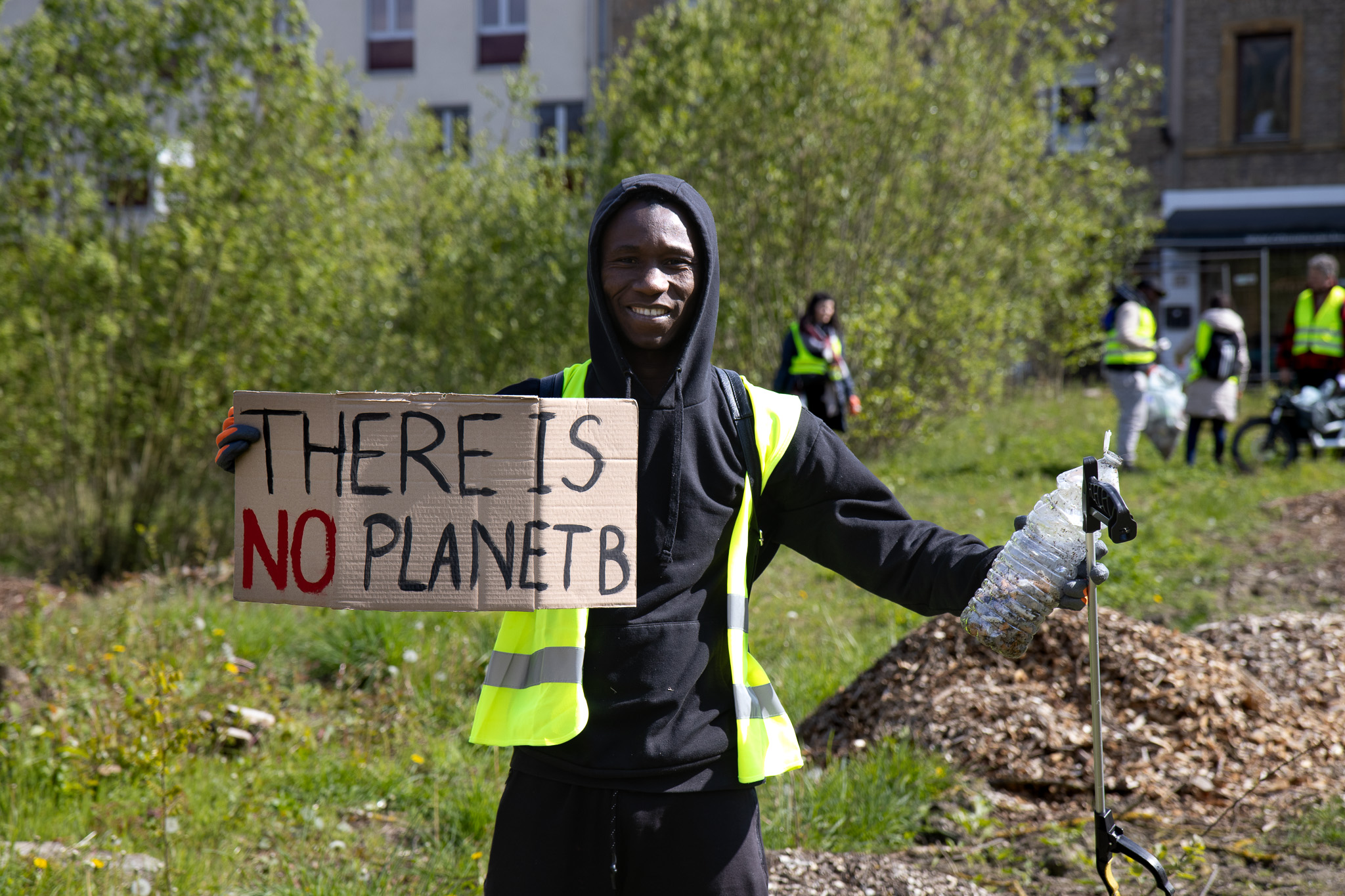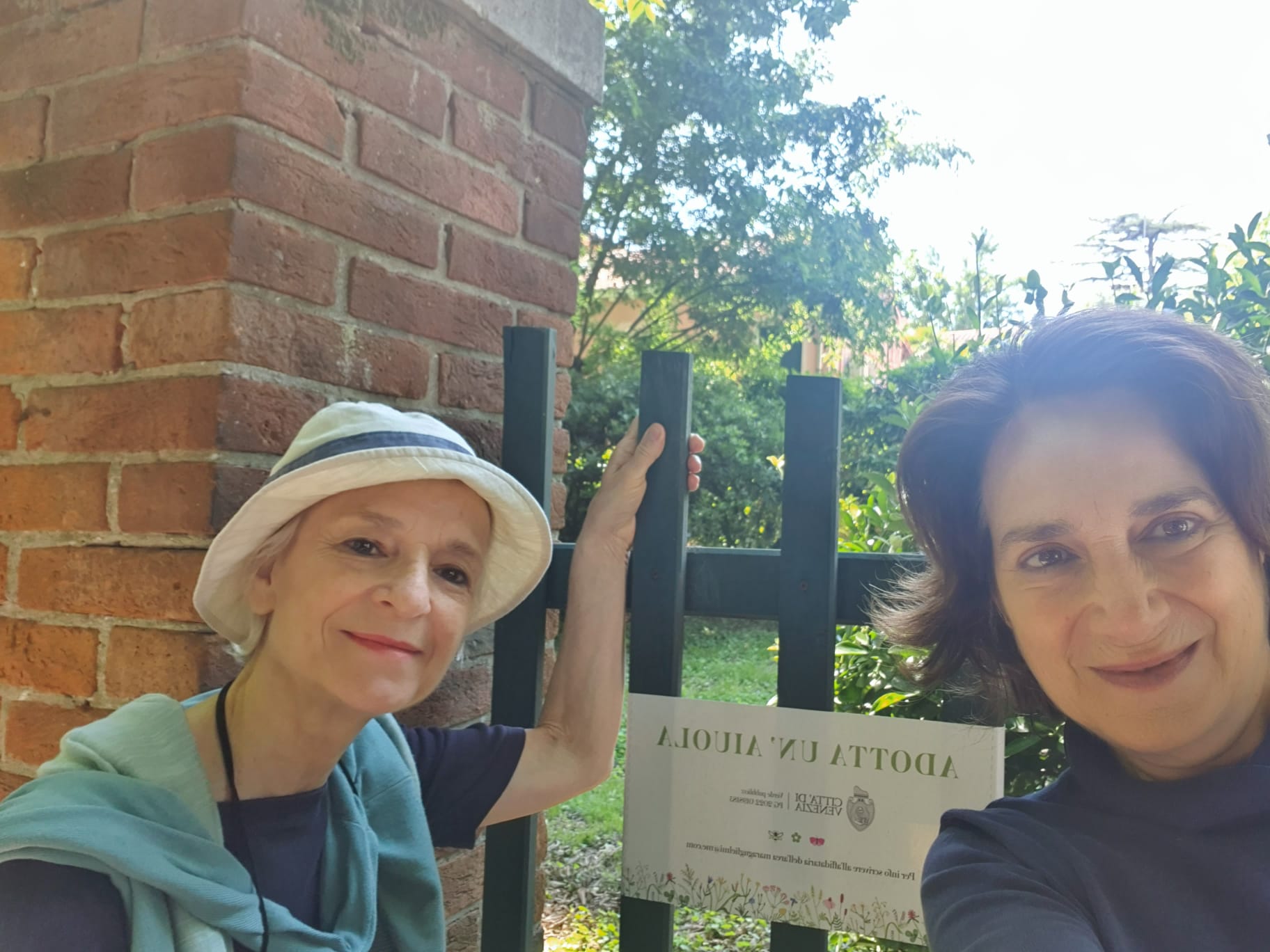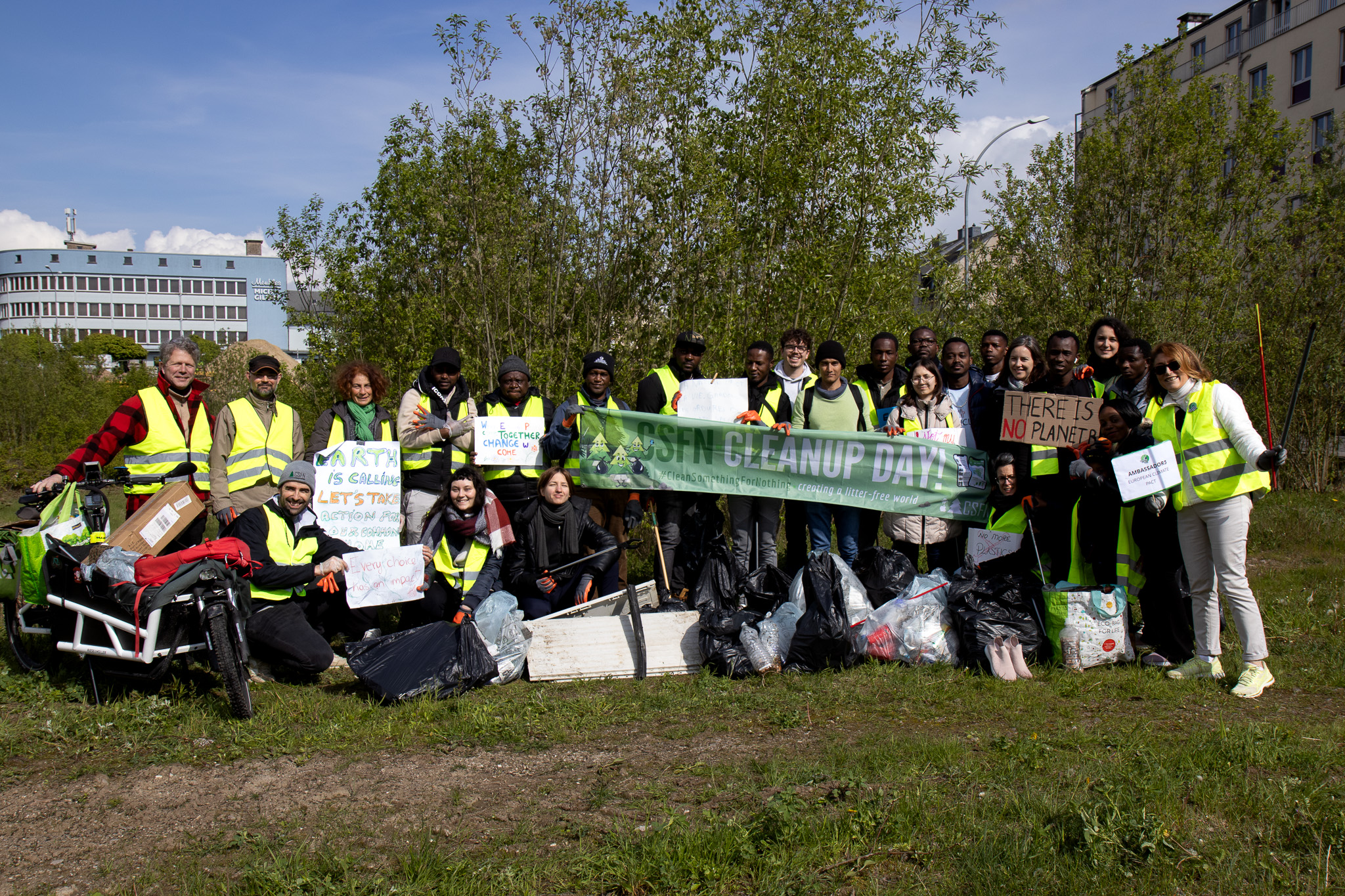Learn more about leading a local climate action group in brief
- Overview
Gather a group of people who share a common interest in climate action and want to work together on an activity or towards achieving a shared goal. Examples could include developing a communal garden, hosting a repair cafe, or creating a local energy community, among many others.
- Objectives
Mobilise people and resources to implement a locally relevant climate project. Help build a sense of community and achieve concrete impacts by acting together. In parallel, improve your facilitation and project management skills.
- Target group
A small group of committed individuals, for example friends, neighbours, colleagues or classmates.
- Requirements
In principle, this activity can be applied everywhere and with a wide variety of people and age groups.
Local Climate Groups in action


Several Pact Ambassadors and friends as they got ready for the "Marche pour la terre" on Earth Day, Luxembourg, 22 April 2024.Several Pact Ambassadors and friends as they got ready for the "Marche pour la terre" on Earth Day, Luxembourg, 22 April 2024. 

Participant of a clean-up organised by Ambassador César González Fernández’s NGO Clean Something for Nothing, Luxembourg, 22 April 2024.Participant of a clean-up organised by Ambassador César González Fernández’s NGO Clean Something for Nothing, Luxembourg, 22 April 2024. 

Pact Ambassador Silvia Beccari brought together a group of local volunteers committed to a cleaner environment, Moscufo, Italy, 28 April 2024.Pact Ambassador Silvia Beccari brought together a group of local volunteers committed to a cleaner environment, Moscufo, Italy, 28 April 2024. 

Pact Ambassador Luciana Favaro and her friend answered the call of their city to adopt a green space - 'Adotta un'aiuola', Venice, Italy, 20 February 2024.Pact Ambassador Luciana Favaro and her friend answered the call of their city to adopt a green space - 'Adotta un'aiuola', Venice, Italy, 20 February 2024. 

Clean Something for Nothing, other organisations and community members came together for a clean-up event on Earth Day, Luxembourg, 22 April 2024. Clean Something for Nothing, other organisations and community members came together for a clean-up event on Earth Day, Luxembourg, 22 April 2024. Beach cleanup led by Pact Ambassador Cristina Calheiros to celebrate World Cleanup Day, Matosinhos, Portugal, 21 September 2024Beach cleanup led by Pact Ambassador Cristina Calheiros to celebrate World Cleanup Day, Matosinhos, Portugal, 21 September 2024
- Before
- Identify an initial group of people who might be interested in participating;
- Invite them to a meeting;
- Register as a host of a Local Climate Action group.
- During
- Define a shared vision and how the group wants to work together:
- introduce your motivation for convening the group;
- discuss the challenges or problem to be addressed;
- decide together what the shared goal is and how the members want to contribute and benefit from the group;
- set a clear objective: what does the group want to achieve and by when?
- Co-create a strategy or project:
- with the group’s end goal in mind, identify what actions, resources and partners are necessary to make it a reality;
- define a roadmap for action by jointly assigning roles, responsibilities and setting a timeline to make it happen.
- Meet to take the necessary actions or solve problems.
- Define a shared vision and how the group wants to work together:
- After
- Celebrate and disseminate the group achievements;
- Share the Taskforce’s results with the European Climate Pact.
Tips
-
Begin with a small group of committed individuals that can support you in initiating the process.
-
Keep meetings inclusive and as pleasant and fun as possible. Identify a place for the group meetings, where participants find themselves comfortable – this is a very important factor to ensure engagement and continuity of activities.
-
Ensure time for listening to different perspectives, questions and interactions.
-
A successful climate action community or group is one where a sense of community, respect and trust are strongly felt by its members.
-
Start with small projects or activities to generate trust and to achieve initial successes to build momentum.
-
Identify a person or people who could help or support your project and engage them (e.g. local administration, community centres, schools, local businesses, etc.).
-
Measure results so that you can give them visibility (e.g. how many trees planted, how many homes renovated and insulated, number of appliances repaired, new kilometres of bike paths created, new green area planted, metres of beach front cleaned, etc.).
-
If the group is trying to tackle a problem or achieve a goal that seems too complex, consider expanding and diversifying the composition of the group so that together you have the motivation, knowledge, experience, skills, financial support or other resources needed to achieve the shared goal.
-
Tailor the approach to your community group. The younger or more inexperienced the participants, the more individual supervision the group is likely to require from you. The more autonomous the group members are, the more your community can become self-governing.
Examples of implementation
-
Senior climate-active community – Activist Grannies (Helsinki ,Finland) – Upon retirement, Pact Ambassador Anu Harkki realised that if all the grannies and grandads really knew about the climate crisis, they would try to protect their children’s and grandchildren’s future. This led Anu, together with 11 other women, to found the Activist Grannies. The first of their kind in Finland, the association has now over 6000 members. The group meets at Helsinki’s central library and invites experts to join them. The events have been a huge success. Ahead of elections, Activist Grannies held a panel discussion with Finnish politicians with the participation of important members of parliament to discuss about fossil fuels, conservation and biodiversity.
-
Local energy communities – Moaña Solar (Moaña Municipality, Spain) – Pact Ambassador Carlos Pérez-Collazo, together with a group of citizens, have been setting-up a local energy community. He writes: “We started the project back in 2019 and decided to set-up the Association of energy users Moaña Solar.” They have now about 300 associates, including the local Council, small and medium-sized enterprises (SMEs), sport clubs, associations, and citizens. They are promoting the creation of several PV collective generation projects and give advice to associates on energy efficiency and on how to reduce their carbon footprint.
-
International climate advocacy - Our Kids’ Climate (digital, from Sweden to a global community) as initiated in 2015 by Pact Ambassador Frida Berry Eklund and Swedish climate-parent network Våra barns klimat (then Föräldravrålet), to make the voices of concerned parents heard at COP21 in Paris. It is a coalition of groups and organisations from over 40 countries uniting to protect children and the next generation from the climate crisis. It builds the strength and capacity of the parent and intergenerational movement worldwide. This is done through connecting groups across countries and topics, providing micro grants, running capacity-building trainings and offering a Fellowship programme for climate-parent leaders. The coalition groups communicate via a joint email list and regular phone calls – most have never met in real life.
“My main advice for people trying to start their own local climate action groups is to find a group of like-minded people to share the work – climate action is more effective and fun if you do it with others.”
Frida Berry Eklund, Sweden, Co-funder of Our Kids' Climate
Showcase the results and encourage others to scale-up!
- Encourage participants to share the group’s achievements, suggestions, pictures and videos on social media using the #EUClimatePact and #MyWorldOurPlanet hashtags.
Suggestions to continue ongoing engagement
- Invite participants to use UN Act Now – AWorld app to reduce their carbon footprint through daily activities such as walking and cycling or reducing food waste.
- Explore other Climate Pact tools to engage with your networks and communities.
Resources to support implementation:
- Activity registration
- Activity results and take-aways submission
- If you would like to share photos of the group or activities with the European Climate Pact, please ask the participants to sign the consent form so that the images can be made publicly available.
- EU Mission on Adaptation DIY manual for mobilising and engaging stakeholders and citizens in climate change adaptation planning and implementation, pages 33–34
- The Communities of practice playbook by JRC, Community of Practice Roadmap table, page 21


